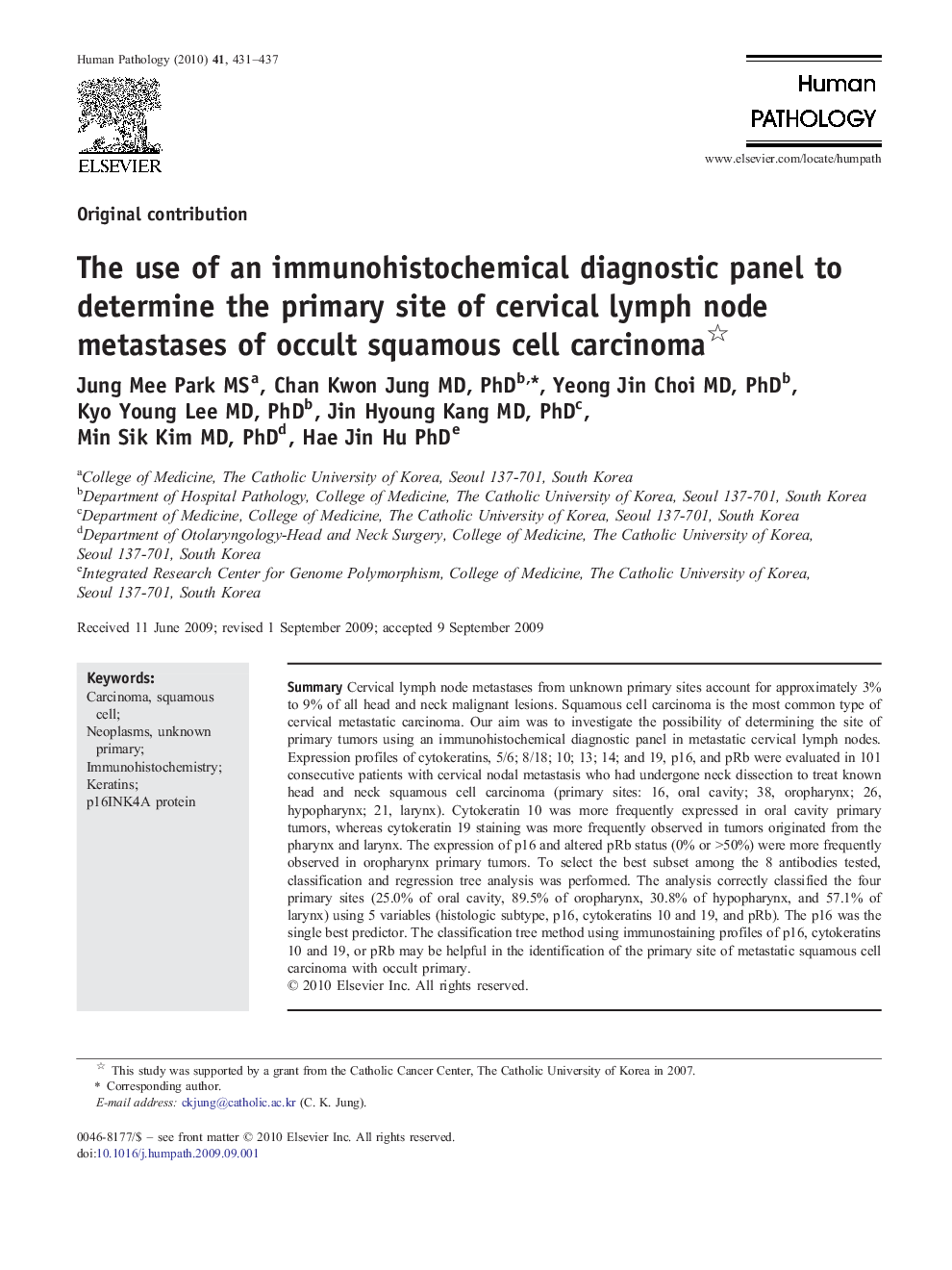| کد مقاله | کد نشریه | سال انتشار | مقاله انگلیسی | نسخه تمام متن |
|---|---|---|---|---|
| 6216318 | 1271445 | 2010 | 7 صفحه PDF | دانلود رایگان |

SummaryCervical lymph node metastases from unknown primary sites account for approximately 3% to 9% of all head and neck malignant lesions. Squamous cell carcinoma is the most common type of cervical metastatic carcinoma. Our aim was to investigate the possibility of determining the site of primary tumors using an immunohistochemical diagnostic panel in metastatic cervical lymph nodes. Expression profiles of cytokeratins, 5/6; 8/18; 10; 13; 14; and 19, p16, and pRb were evaluated in 101 consecutive patients with cervical nodal metastasis who had undergone neck dissection to treat known head and neck squamous cell carcinoma (primary sites: 16, oral cavity; 38, oropharynx; 26, hypopharynx; 21, larynx). Cytokeratin 10 was more frequently expressed in oral cavity primary tumors, whereas cytokeratin 19 staining was more frequently observed in tumors originated from the pharynx and larynx. The expression of p16 and altered pRb status (0% or >50%) were more frequently observed in oropharynx primary tumors. To select the best subset among the 8 antibodies tested, classification and regression tree analysis was performed. The analysis correctly classified the four primary sites (25.0% of oral cavity, 89.5% of oropharynx, 30.8% of hypopharynx, and 57.1% of larynx) using 5 variables (histologic subtype, p16, cytokeratins 10 and 19, and pRb). The p16 was the single best predictor. The classification tree method using immunostaining profiles of p16, cytokeratins 10 and 19, or pRb may be helpful in the identification of the primary site of metastatic squamous cell carcinoma with occult primary.
Journal: Human Pathology - Volume 41, Issue 3, March 2010, Pages 431-437